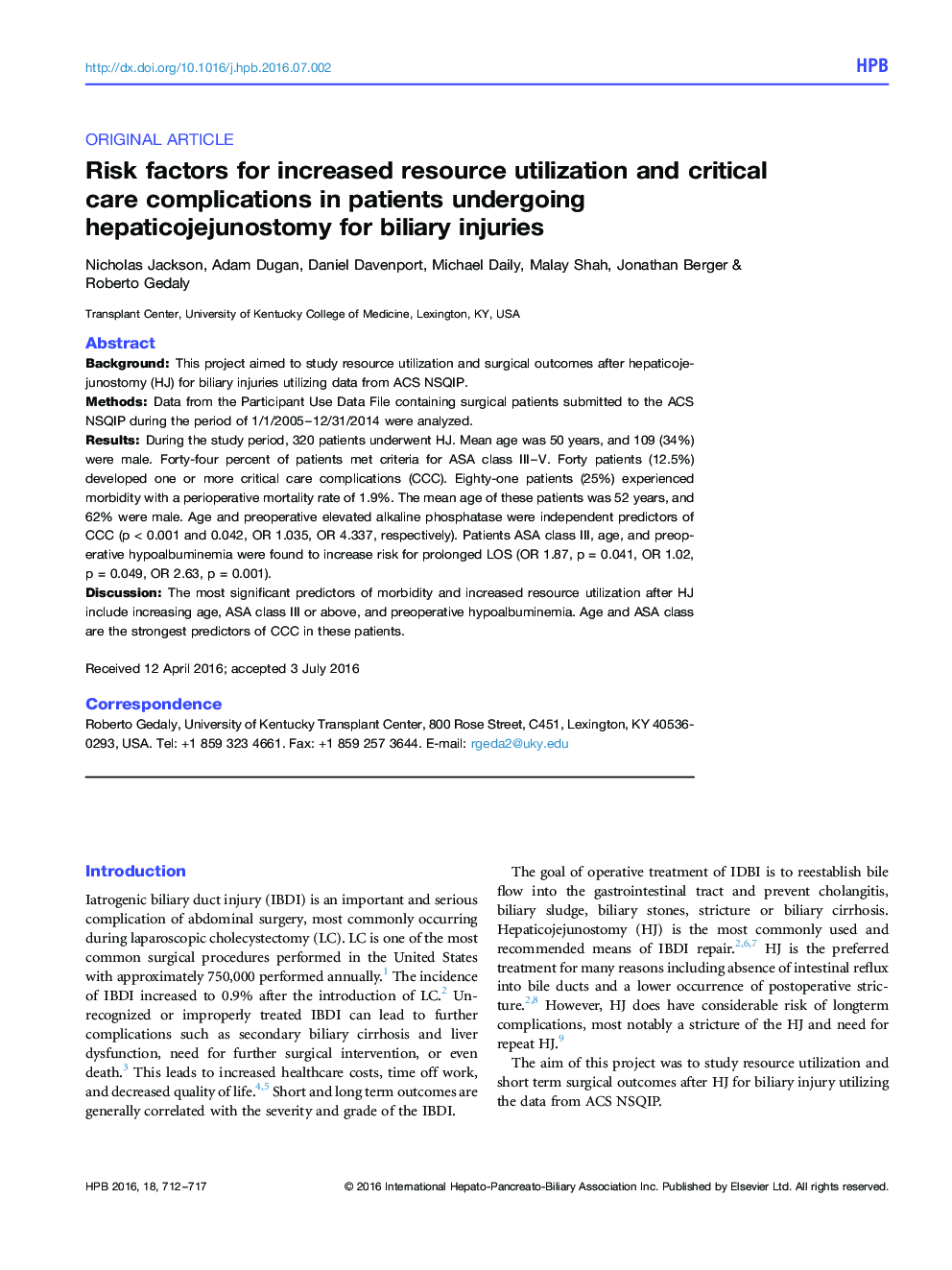| کد مقاله | کد نشریه | سال انتشار | مقاله انگلیسی | نسخه تمام متن |
|---|---|---|---|---|
| 3268422 | 1407347 | 2016 | 6 صفحه PDF | دانلود رایگان |
BackgroundThis project aimed to study resource utilization and surgical outcomes after hepaticojejunostomy (HJ) for biliary injuries utilizing data from ACS NSQIP.MethodsData from the Participant Use Data File containing surgical patients submitted to the ACS NSQIP during the period of 1/1/2005–12/31/2014 were analyzed.ResultsDuring the study period, 320 patients underwent HJ. Mean age was 50 years, and 109 (34%) were male. Forty-four percent of patients met criteria for ASA class III–V. Forty patients (12.5%) developed one or more critical care complications (CCC). Eighty-one patients (25%) experienced morbidity with a perioperative mortality rate of 1.9%. The mean age of these patients was 52 years, and 62% were male. Age and preoperative elevated alkaline phosphatase were independent predictors of CCC (p < 0.001 and 0.042, OR 1.035, OR 4.337, respectively). Patients ASA class III, age, and preoperative hypoalbuminemia were found to increase risk for prolonged LOS (OR 1.87, p = 0.041, OR 1.02, p = 0.049, OR 2.63, p = 0.001).DiscussionThe most significant predictors of morbidity and increased resource utilization after HJ include increasing age, ASA class III or above, and preoperative hypoalbuminemia. Age and ASA class are the strongest predictors of CCC in these patients.
Journal: HPB - Volume 18, Issue 9, September 2016, Pages 712–717
